For an area that’s usually ignored, east Tokyo’s Sanya has suddenly been in the news of late, perhaps in part due to the increased development going on there. First was this article in The Guardian that focuses primarily on the lives of individual residents: The Tokyo neighbourhood where people come to disappear. Then not long after it was followed by this informative, but sadly rather poorly titled piece on Japan Today: Sanya: A travel guide to Tokyo’s coolest ghetto.
Despite very different approaches, both are interesting reads, and to be completely honest, the photos below were actually put together in view of accompanying the Guardian article, but time restraints ultimately meant none of them made it — hence the compilation and inclusion of them here. That said, my personal interest goes back much further, as over the years I’ve visited the area more times than I’d care to remember, and in doing so have witnessed first hand the changes detailed in both stories.
As a brief bit of background info, Sanya’s history is a dark one, and it’s definitely a place for ‘others’ in the land of the homogenous. To start with, its main junction is named Bridge of Tears, marking, as it does, the location where loved ones said goodbye to convicted criminals before they were executed. During the same time period, the district was also populated by the lower caste burakumin, a persecuted group of people who did ‘impure’ jobs such as butchering animals and skin curing.
In much more recent times, Sanya was home to a large community of day labourers — basically men who physically helped build the modern metropolis that is Tokyo today. Not that they were given any recognition of course, and now, this more contemporary element of the Sanya story is all but gone as well. Most of the former workers are just too old, and yet the majority of them are still outsiders, this time as poor, sometimes homeless outcasts living life day-to-day on minimal pensions and benefits.
So even now, Sanya is rather rough around the edges. At least by Japanese standards it is, anyway. There’s a visible homeless problem, and the sight of people drinking or drunk on the street isn’t uncommon. At the same time, however, numerous budget hotels have sprung up to cash in on the current tourism boom, and an increasing number of new homes and apartment buildings have begun to appear as well. All of which, it goes without saying, have had an impact on how the area looks and feels. Yet in many ways there has always been an imbalance of sorts, with homeowners next to the homeless, and shoppers walking past the worn and utterly wasted. Elements of which I’ve seen over the years, and given the opportunity, attempted to capture.
As a series, the images below are simply set out in chronological order — specifically from a couple of weeks ago, to early 2011. That seemed apt after talking about Sanya’s past. It should also be said that some of the buildings in the photographs have ceased to exist. Similarly, some of the people featured must have suffered the same fate. But such is life, especially so in a place like Sanya.
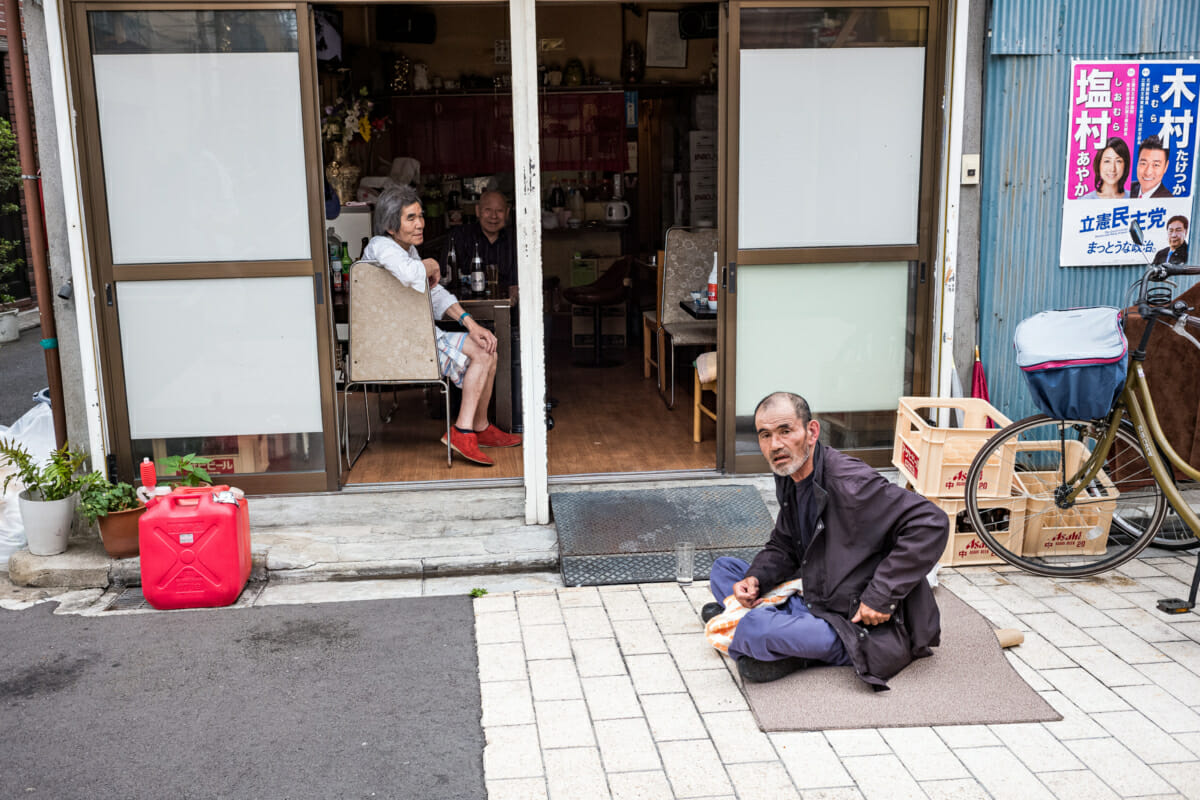
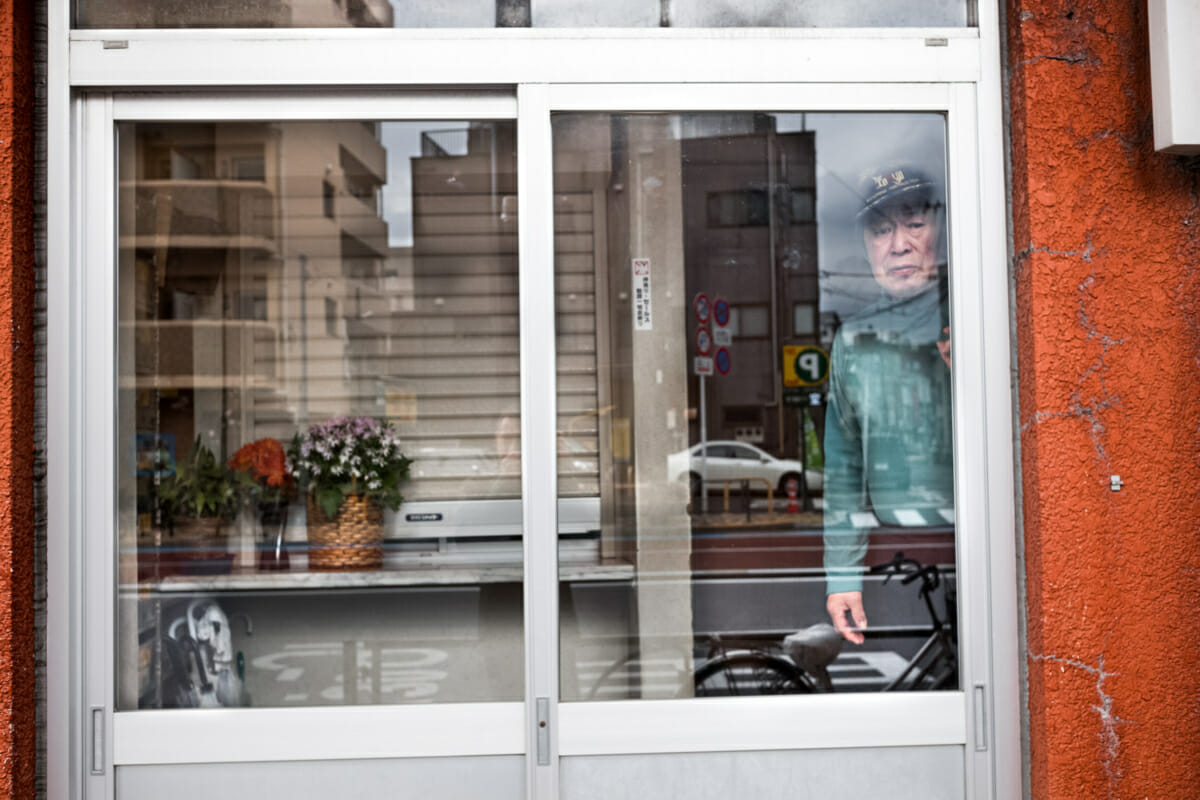
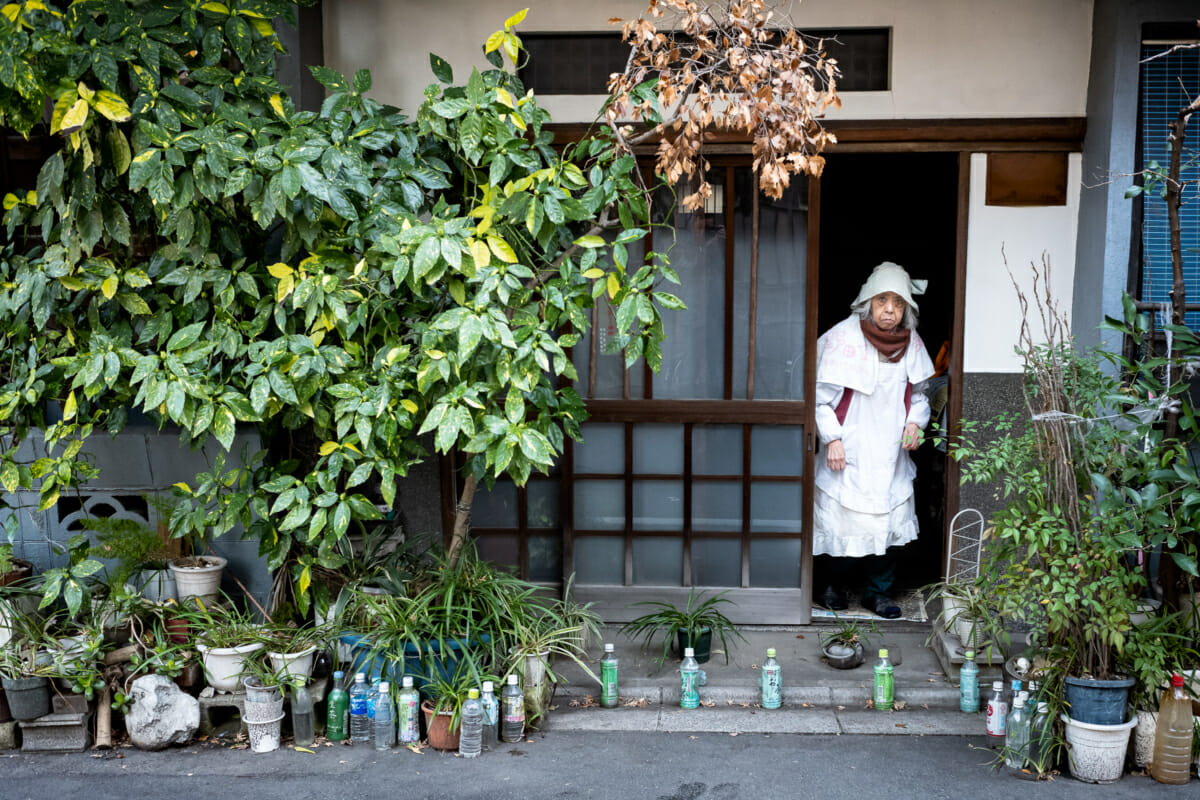
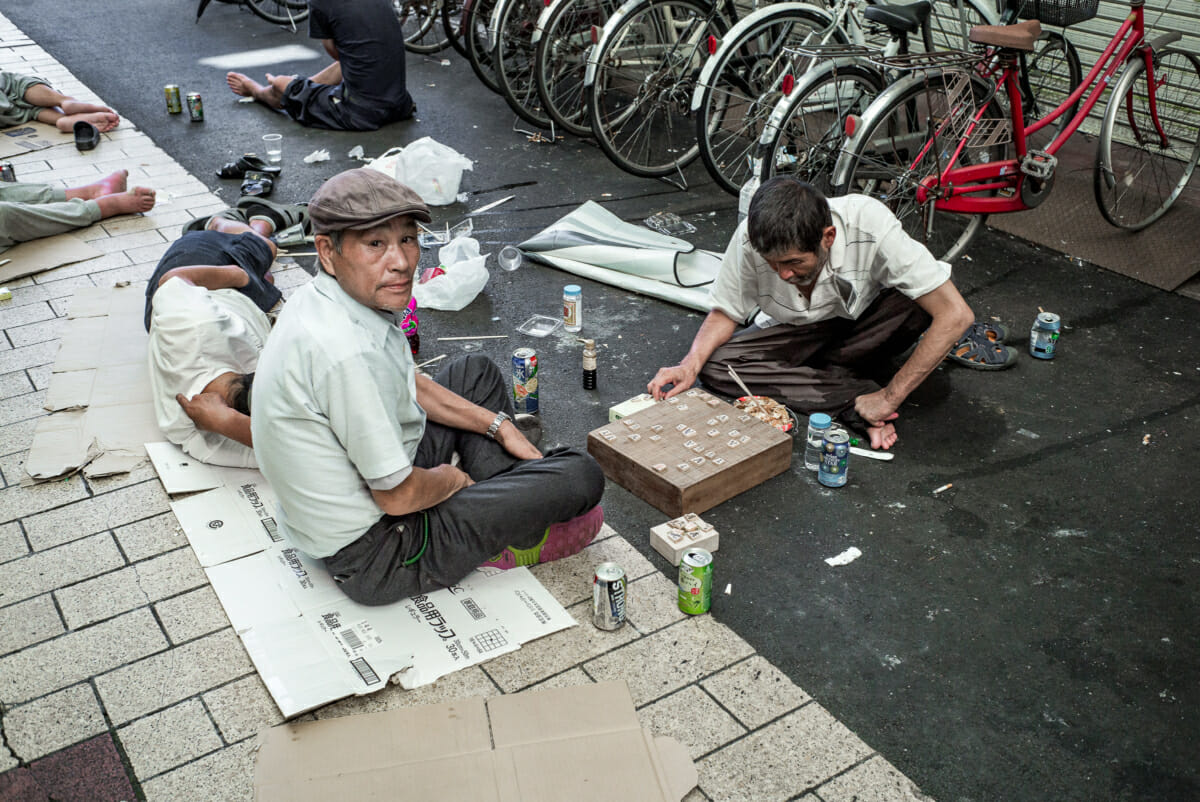
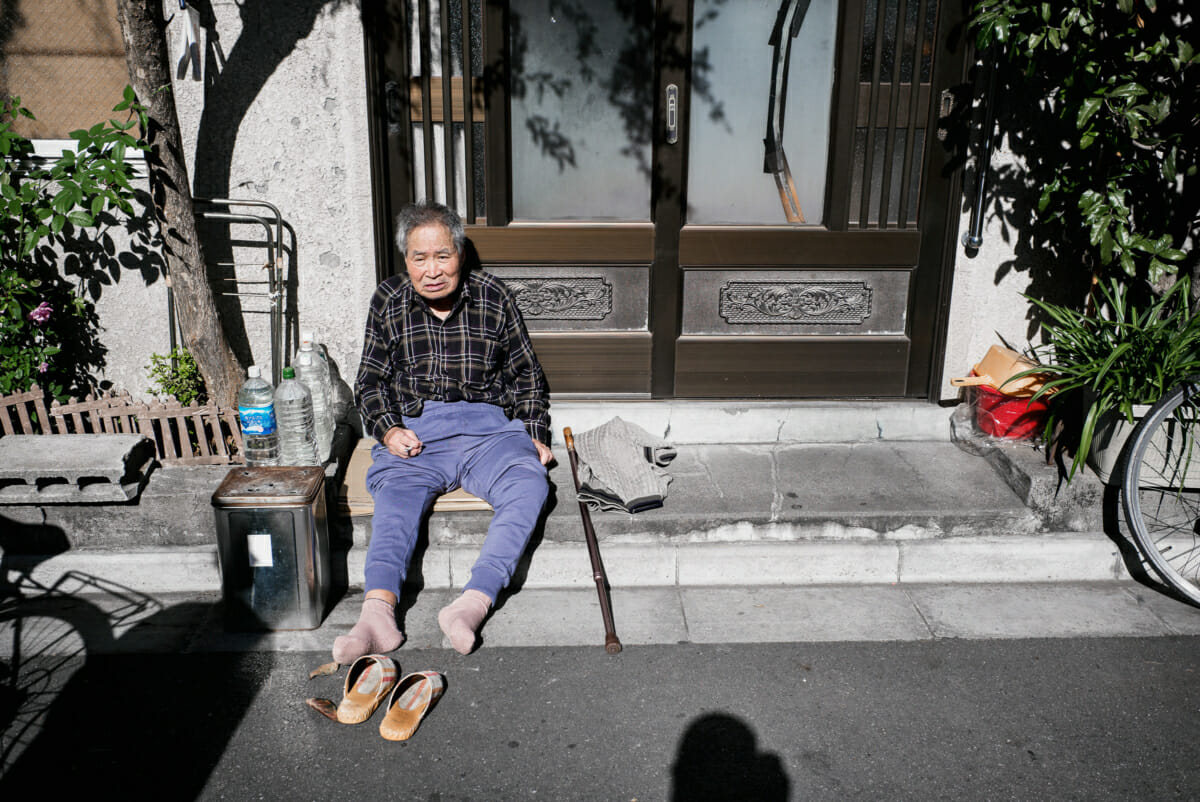
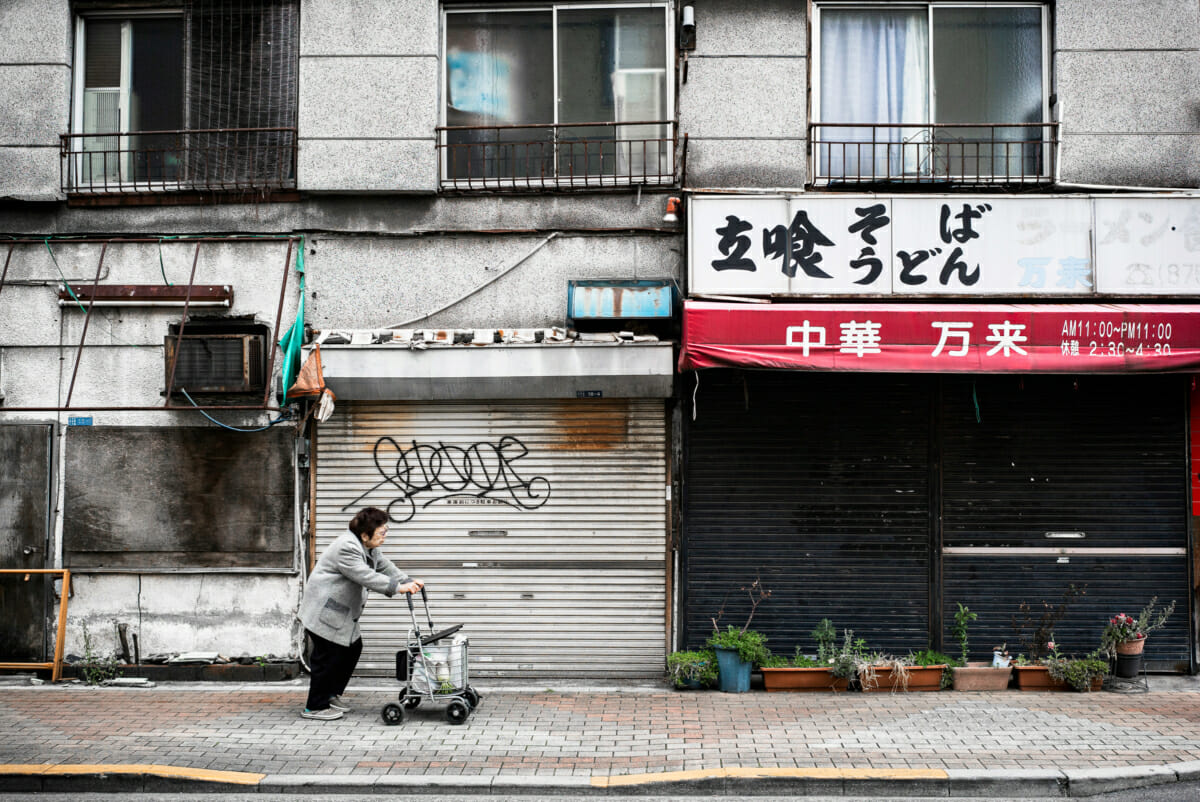


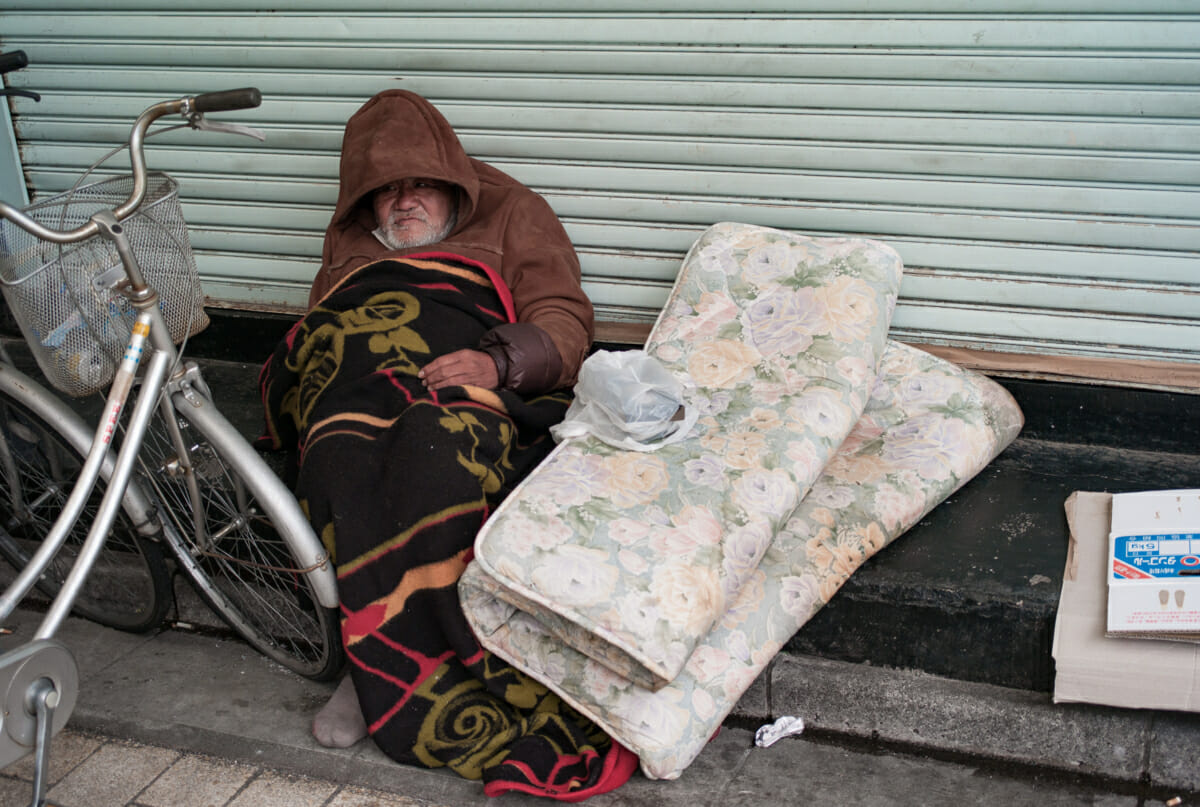
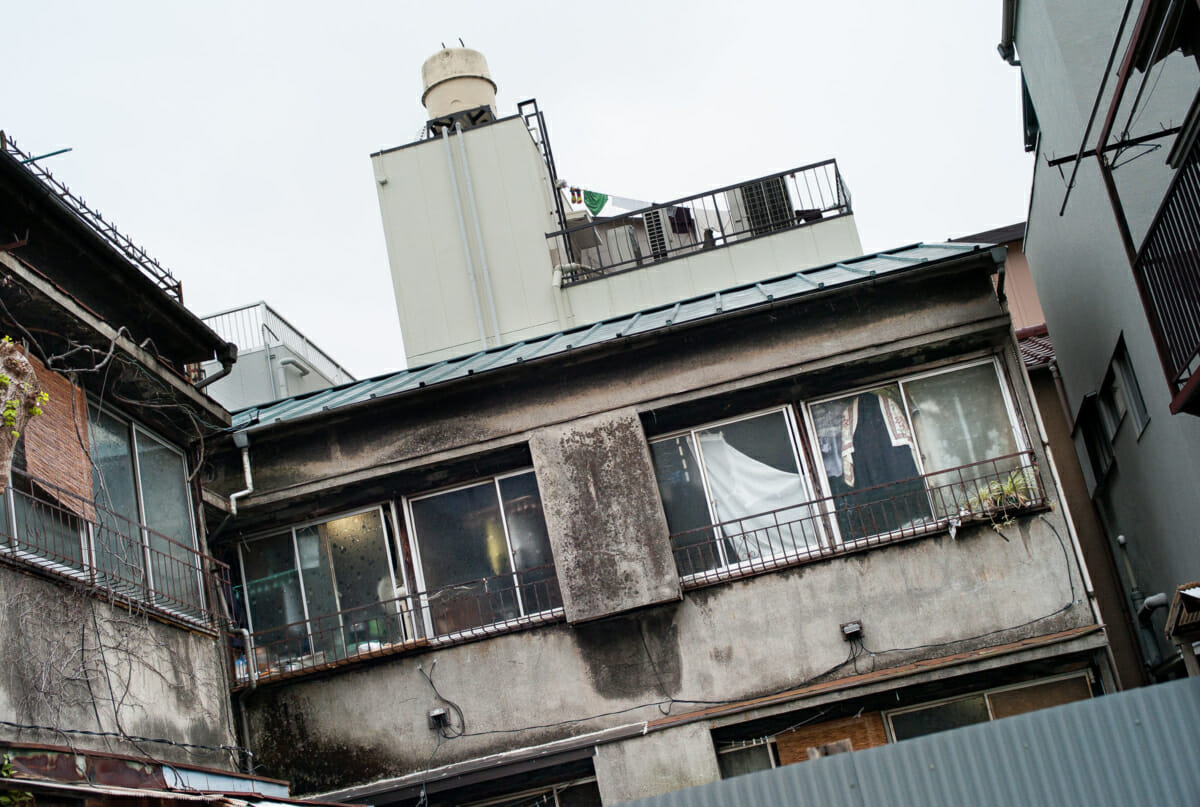
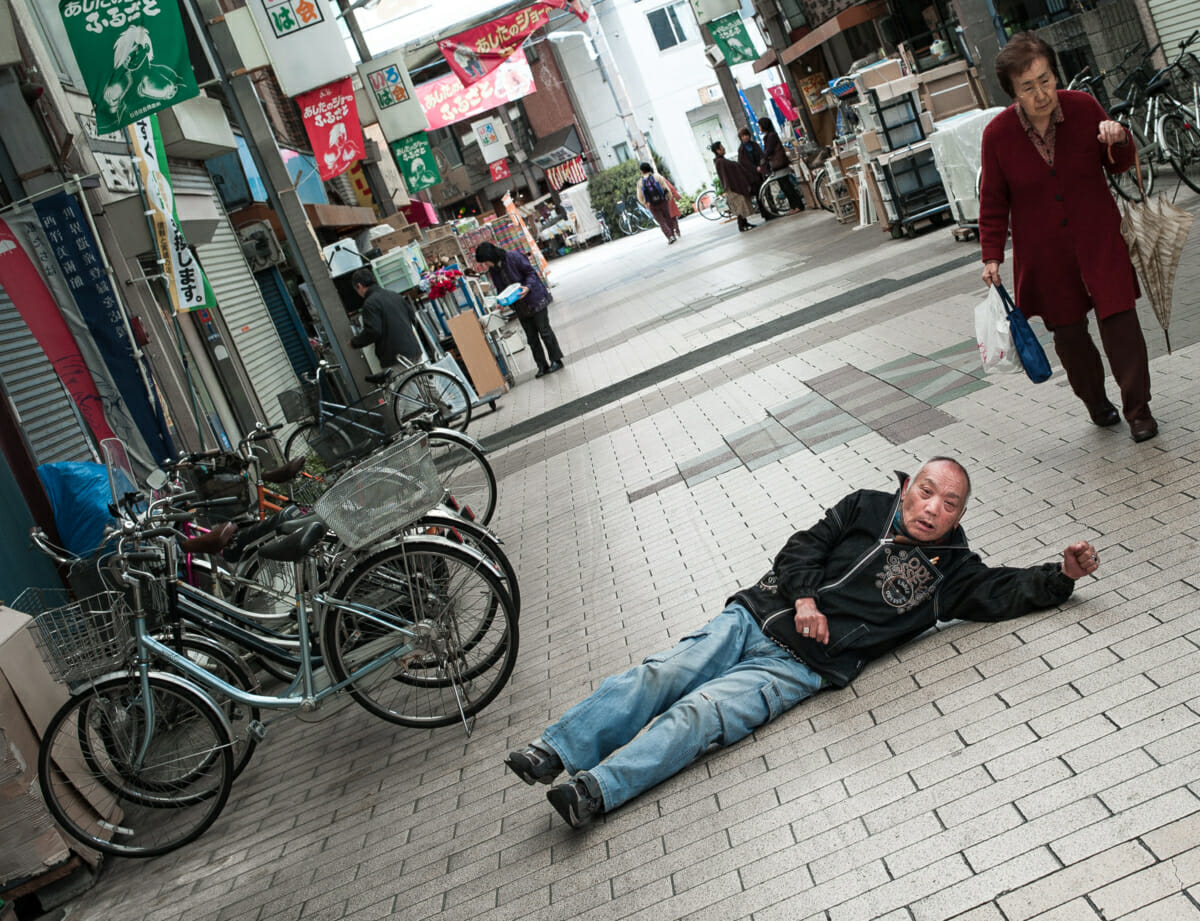

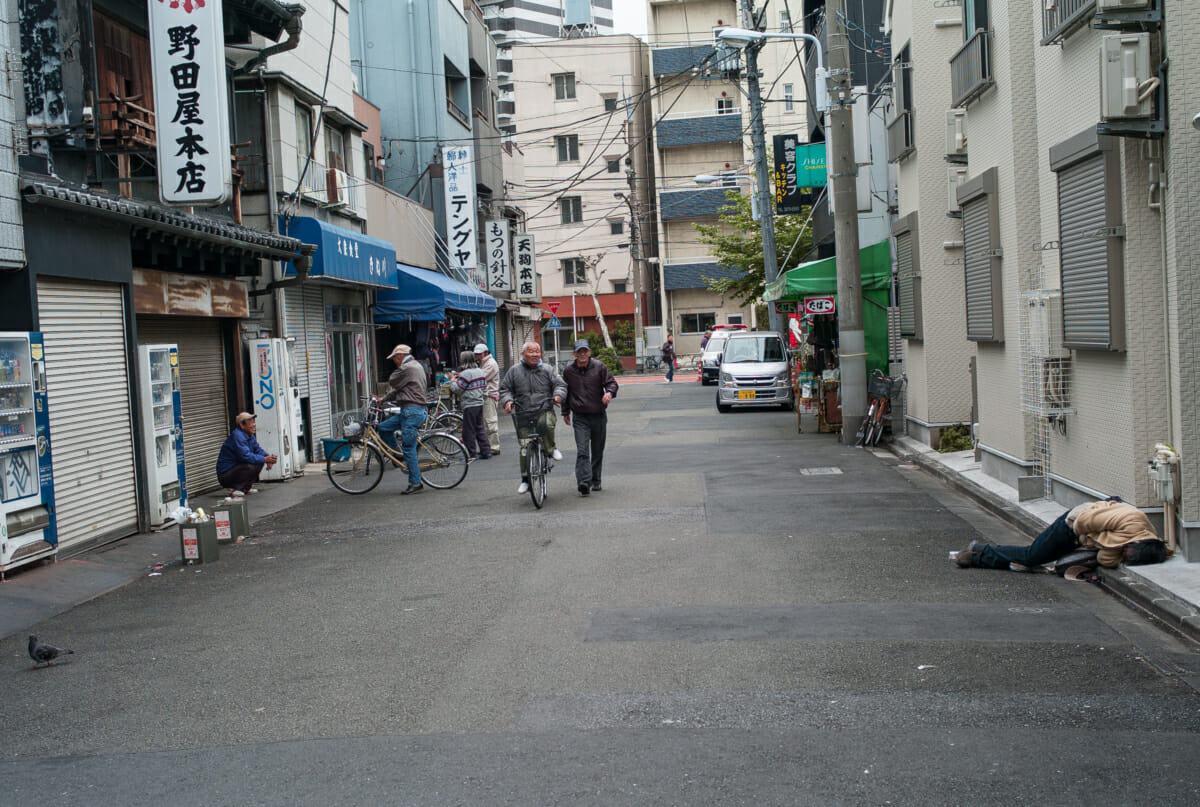
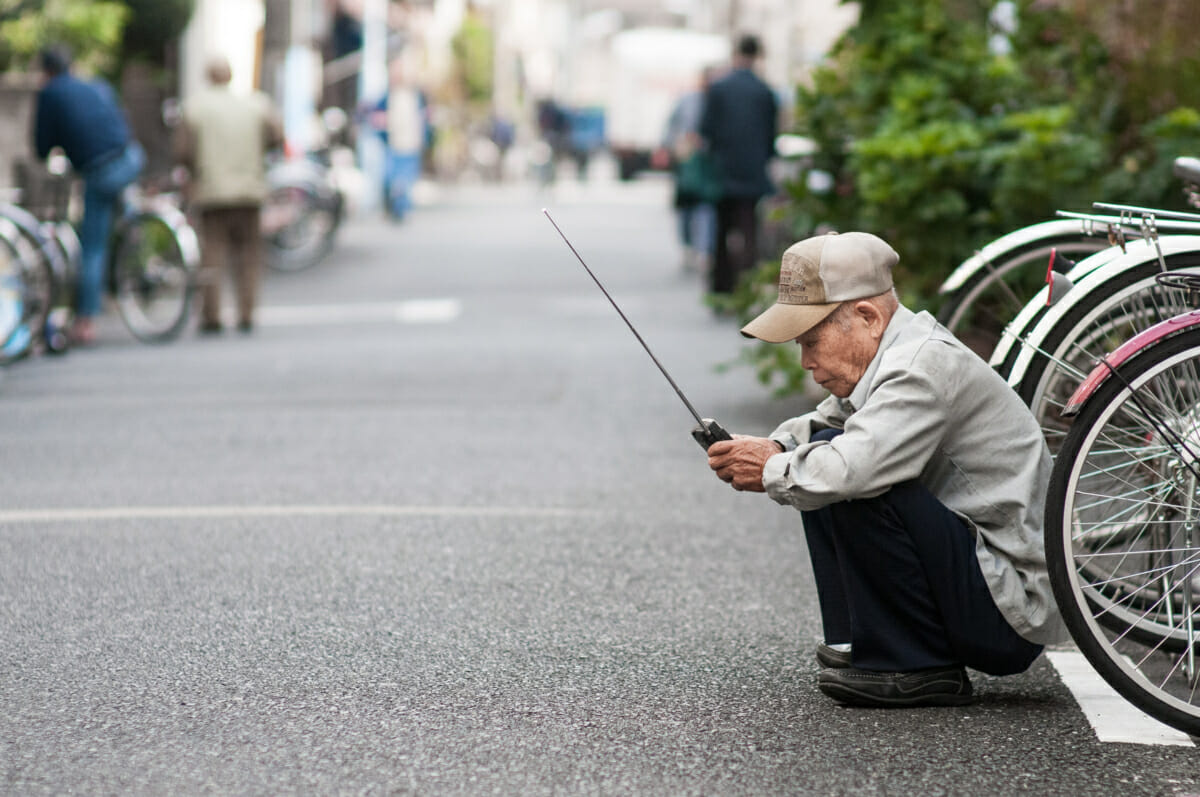
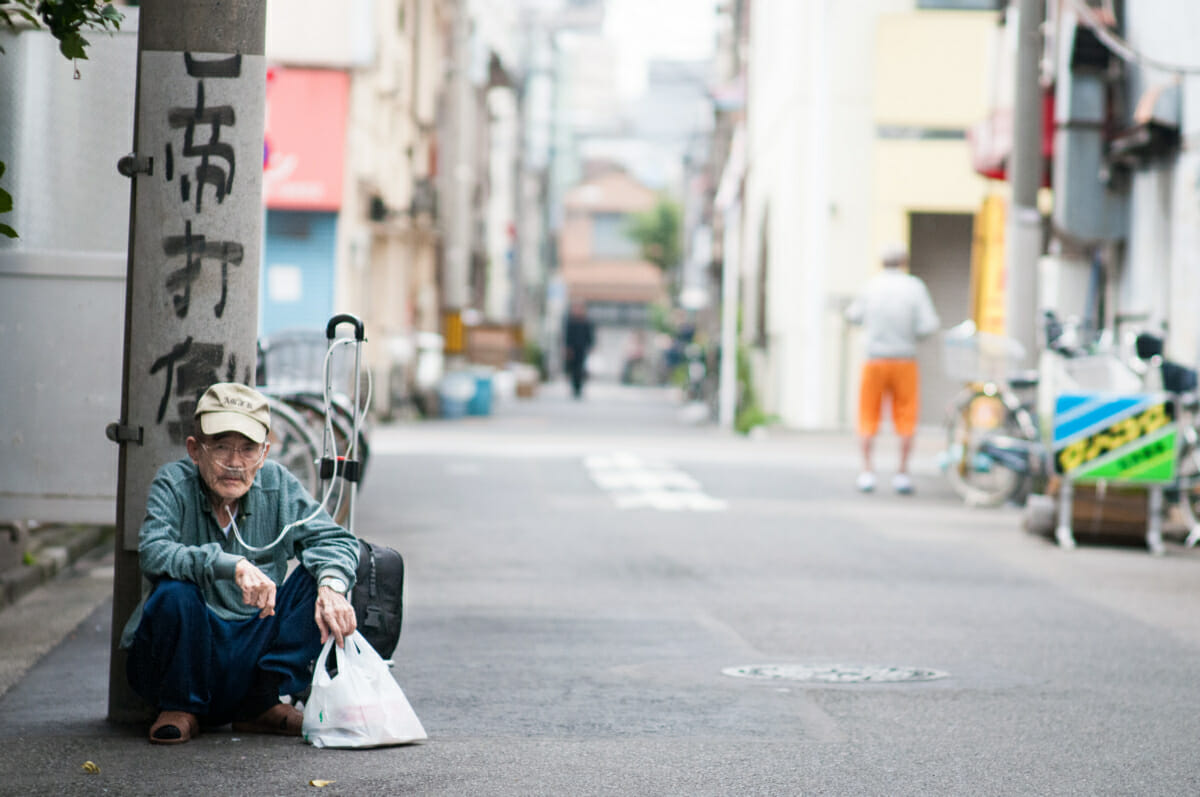
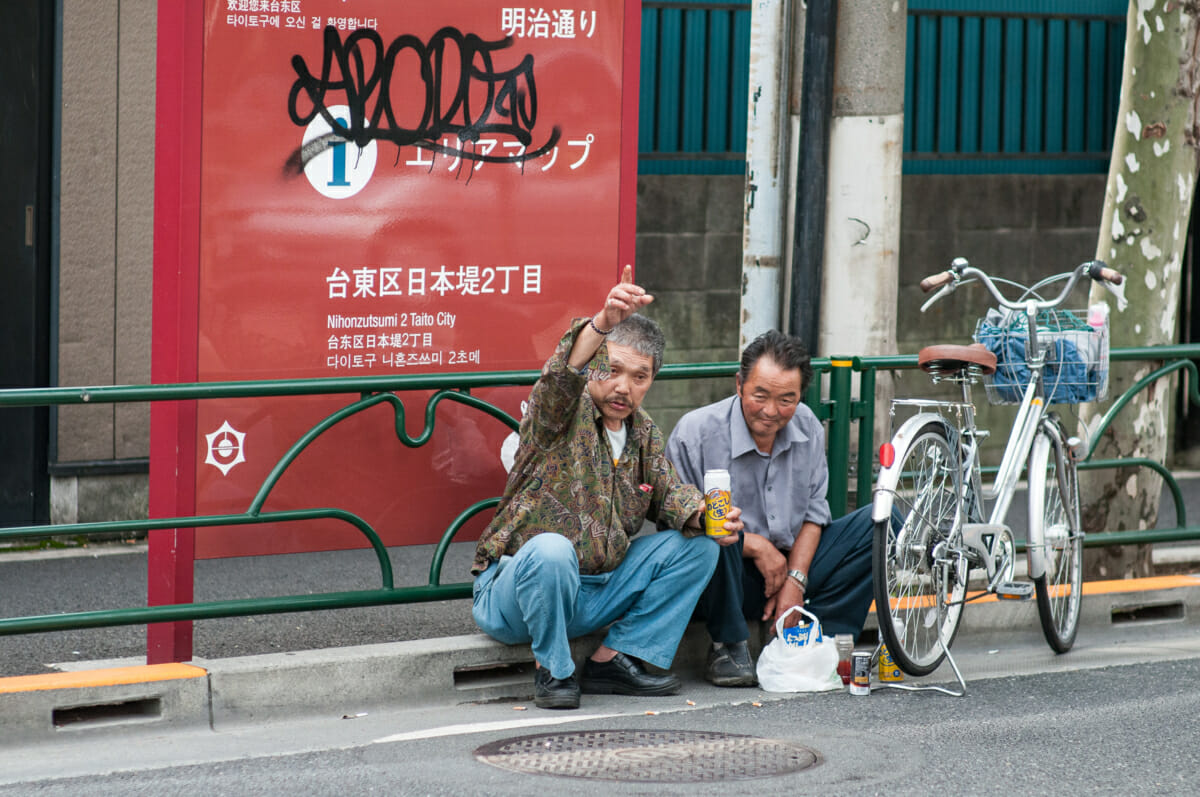
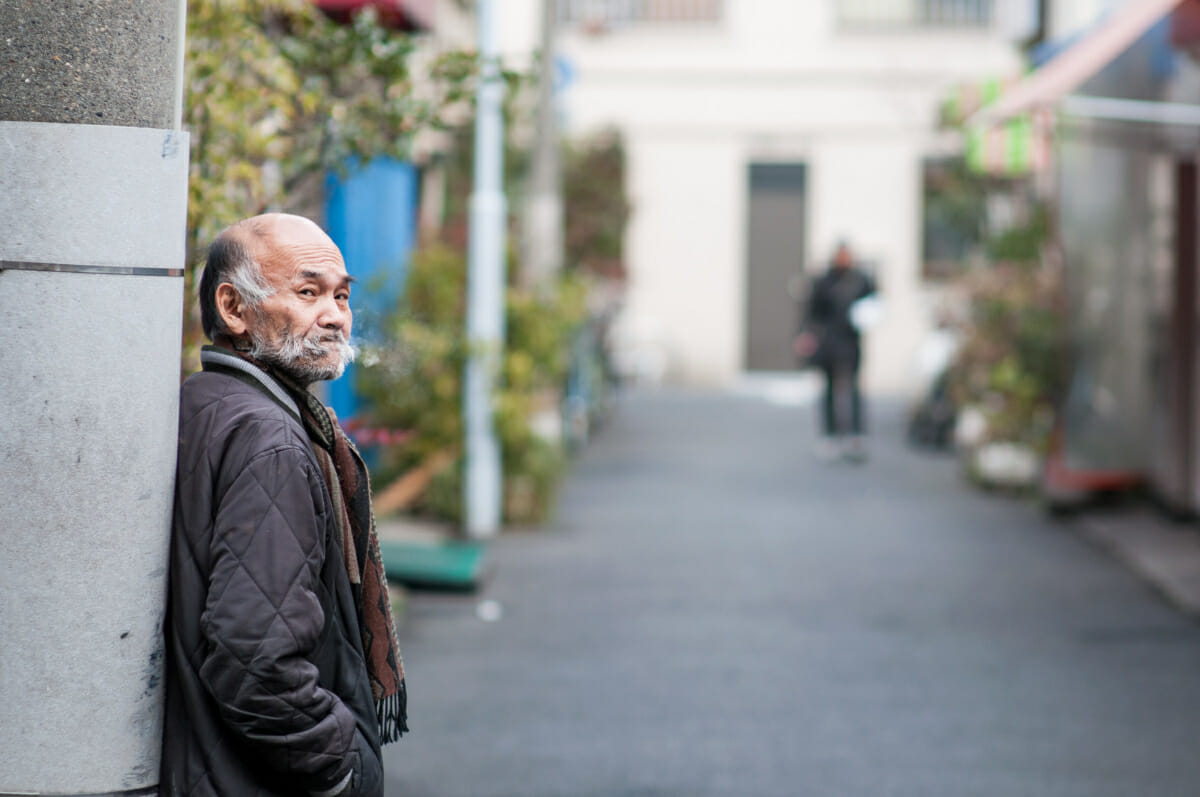
Coli says
Very interesting topic. Lee. Thank you for the powerful photos as well. I recognize a few of these pictures from your previous posts. I didn’t realize they were all from the same area. I know you’ve been to kamagasaki before. Would you say these two locations are similar? Which one in your opinion was in more dire straits ? Perhaps both are two completely different in their own ways. When you take pictures in these kinds of areas do people usually react worse than when you take pictures in other neighborhoods?
Lee says
Glad you think so. Sanya has always fascinated me, so it’s good to know other people think similarly. And thanks, not the happiest of photos, but I think they offer an honest view of the area.
Hmm, that’s a good question. Kamagasaki shocked me when I visited. Way more than I expected it to do to be honest. It’s on a much bigger scale than Sanya, both in regards size and population, and the conditions and plight of the people there are visibly much worse.
Also, it still functions as an area where people go and stay to get daily work, and the building there were people wait is something else altogether. A truly shocking place. In Sanya, on the other hand, there’s nothing like that. Not anymore, anyway.
As for reactions, I’ve had some negative ones in Sanya. And that’s fair enough. Totally understandable. Although on the whole people have been no different than anywhere else.
Kamagasaki though was totally different. The people there were really friendly and open. One fella, who quite clearly had next to nothing, came up to us with some beers. He’d obviously done a job for the day and had a little money, so he decided to treat the foreigners. Definitely one of the most touching experiences I’ve had here.
Coli says
Lee thank you for always responding to everything:) this subject matter is always interesting to me especially since so much of this country tries to be neat and clean.
That is definitely something special about the people you met in kamagasaki.
Lee says
No problem at all. I genuinely appreciate the comments. Alway nice to get feedback.
Yes, it’s something that has always stuck in my memory. A place of genuine poverty, but at the same time great humanity.
Don says
I get it but compared to many neighborhoods here in states it doesn’t look so poor to me.
Lee says
That’s a fair point. It’s all relative. Definitely a rough place by Tokyo standards, but obviously not when compared to some cities. There’s not really much in the way of drug problems either, and certainly nothing like the opioid crisis that’s destroying so many lives in the US.
DavidT says
Awesome photos as always but I’m really thankful for the text and information. It was almost totally new to me so I found it very interesting. Thanks for sharing! 🙂
Lee says
Thanks, and you are very welcome. Good to know you got something from it. The photos I think give a decent impression of the place, but some extra info definitely helps in this case I think.
411 says
i follow you because i’m genuinely a fan of your work and admire your beautiful depiction of the old and forgotten japan. however, tourists taking pleasure in sanya and nishinari should be avoided as its on some privileged white man’s slum tour tip. i’m only raising this as your followers may only see photo opportunities on their newly acquired leica or contax in shinjuku without considering the people and potential danger. these places are almost certainly safe, but nishinari is still yakuza grounds and lets not forget the filmmakers who were murdered uncovering sanya. either way, keep doing what you do! (but maybe add some disclaimers and more info for the ignorant bunch)
Lee says
Thank you, very nice to hear you like what I try to do.
It’s a tricky one for sure, and in many ways I’m just the same. I might not be a tourist in the traditional sense, but arguably I am in places like Sanya, as it’s not where, or how I live. For actual places I tend to mention the name, but must admit, when it comes to bars and the like I don’t as such little enterprisers survive on locals, so a potentially steady stream of tourists could damage their business.
As for more information or disclaimers, however, I’m not sure what I could offer. In fact, as the comment below proves, my own behaviour isn’t always seen as considerate, so I might not be best person to offer advice…
Matthew says
are you sure these people wanted to have their photo taken?
Lee says
That’s a question I can’t really answer. But then it’s a question that could be asked of anybody who takes photos that aren’t posed. Whether it’s right or wrong is very much personal opinion, but I obviously feel it’s ok.
In my defence I don’t take the photos surreptitiously, and am very up front about what I’m doing, so if people don’t like it they can’t tell me to stop — and I will. Something that none of the people in the above series did.
George Zielinski says
Thank you for the insightful photos Lee. I am a half-Japanese American, and have only been to Japan once (in 2013). Luckily we were with my Japanese mother, and she and our relatives who live there in Tokyo guided us around to all the places they felt we would like. Obviously Sanya was not on the list. I did see ONE homeless’ cardboard box house in Ropongi, but certainly nothing like your photos. I breaks my heart to see such a humble and proud people in such a way. Obviously there are many reasons why and I won’t pretend to think there is a simple solution. Your photos give me more insight into the humanity of Tokyo and for that I am grateful.
Lee says
You are very welcome. It’s incredibly gratifying to hear you got something out of them. The best complement I could receive.
Yes, even in this relatively small area, there are clearly a myriad of reasons why so many men are in such dire straits. Age and a life of irregular work are clearly a part pf the story, but that’s definitely not the case for everyone.
Rohan Gillett says
Very nice photos Lee. Yes, I’d have to agree that Japan Today’s article wasn’t well titled. I think I’ve been to Sanya once, but it is a place I need to visit again. The drug problem here isn’t anywhere near to some other countries, but I think it is climbing and honestly, I what we see is only the tip of the iceberg. Every year, I think, the police seem to be seizing record hauls of drugs at the ports. It will be interesting (more like sad) to see what happens in the future.
Lee says
Thank you.
It’s definitely a very different place to what it was only a few years ago. Even just the removal of the shotengai’s roof has made a massive difference. So if it’s a while since you’ve been, you’ll notice a big change in look and feel.
That’s a good call on drug use here. It’d be very interesting to know what percentage of prison sentences are due to drug charges. My guess is it’d be a fairly substantial number.
Ric says
Thanks for the article and pictures. Beautiful and eye opening. I lived in Osaka a decade ago, very close to Kamagasaki, in Shin Imamiya, which is pretty much the same thing. It was amazing to see children walking to school among homeless, perfectly safe. I find it outrageous that in the whole country there are just 30k homeless and the government can’t take care of them with some public housing and welfare. I’m in Tokyo now, I’ll go and have a look at this neighbourhood. I like your blog.
Lee says
You are very welcome. Glad you like what I try to do on these pages too.
I know what you you mean about the contrasts. Witnessed both in Osaka and Tokyo. Scenes that are sad, and yet at the same time oddly positive.
Yeah, there seems to be little in the way of help, and a rather more concerted effort to keep them out of sight. And once there of course, they can be much more easily be forgotten. There are several NPOs that I know of working in Sanya, which suggests there are probably more. It also suggests they are there because the men aren’t getting help elsewhere, which like you said, is outrageous. Especially so in such a wealthy country.
Mame chan says
Thanks 👍
Lee says
You are welcome!
Ioan Sameli says
I think everyone who has been on a photo safari to Sanya has taken this abandoned child police ride lol. Really iconic.
Lee says
It is. Or at least it was. Not been there for years now. In fact the artwork that sort of replaced it (photo 9) is long gone as well.
Jeffery says
Ahh the soft underbelly. It is always sad to see the elderly in such straights.
Lee says
Yes, it really is. Not how anybody should have to spend their last years…
Rg says
When i was in tokyo almost 2 weeks in april this year, i saw a lot of homeless people there. Its better to be poor in japan than in some countries, but living in a cardboard box is not life imo…
Lee says
Yes, the homeless are definitely more visible than they once were, which strongly suggests the numbers are on the rise. Certainly not just restricted to Sanya either. And yes, I totally agree. A mere existence at best…
cdilla says
The photographs you share with us are often an education. They encourage me to learn more, and provide me with the ability to scrape away a little of the high gloss NHK and Government polish to peer through at the generally unwitnessed.
You walk a tightrope when covering material like this – but if there were not people like you the world would be a more ignorant place. There is nothing salacious or covertly invasive in what you show us, and nothing misleading. Long may you continue.
Lee says
Thank you very much, that’s really good to hear on all fronts.
Yes, it really is a tightrope, and it’s often difficult to know where to tread as it were, so it’s reassuring to know I’m getting it something like right.
Cal says
Thanks for showing us a different side of Tokyo. Great pics. I visited Tokyo a year ago in the downtown area (Shinjuku, Shibuya, Asakusa, etc.) and I did not caught a glimpse of homeless people. I had the perception that there are virtually no poor and disadvantaged people in a rich nation, but truth captured in your pics painted a different reality. It’s really sad to see elderly living in such dire conditions – it reminded me of where I came from, and homeless people I saw in Hong Kong. Utterly depressing, I wouldn’t wish anyone to be homeless. I don’t think society should look down on them, instead we should help them.
Cheers.
Lee says
You are very welcome. And yeah, just like every wealthy country it would seem, Japanese has a sizeable number of homeless people. Sadly they are generally looked down on here, but like yourself, I think they should be helped. It’s the least any society can do.
Extra-Ordinary Hito says
So cool, I like the vibe of Sanya. Post WWII classic Japanese town, very authentic.
Sometimes I get tired of shiny people and shabby looking people feels better.
EnJ0Y L1fE
Nicole says
Incredible photos. Definitely made me feel a type of way being Japanese American. Thank you for sharing
Youknownothingaboutprivaxy says
Another stupid shots by stupid self-centered photographer from west for MONEY and CLOUT. Look at your pictures, the people don’t look they are comfortable and CONSENTED to this. And you find it fascinating, taking pictures of them when they’re in bad state and just prefer to be private?
Then you’ll be surprised why foreigners like us are being frowned or labeled as entitled bitches not just by Japan but other reserved countries or country with dignity and respect. If you go to any country, kindly research their culture and norms first before taking photos rightaway. Respect their god damn privacy unthoughtful idiot.
Poverty pornographer.
Reddit says
This post is making the rounds on Reddit again.